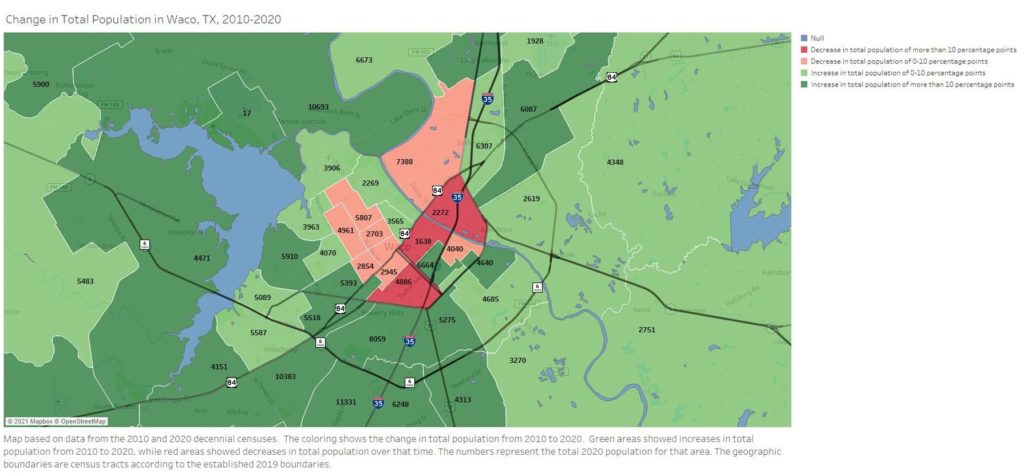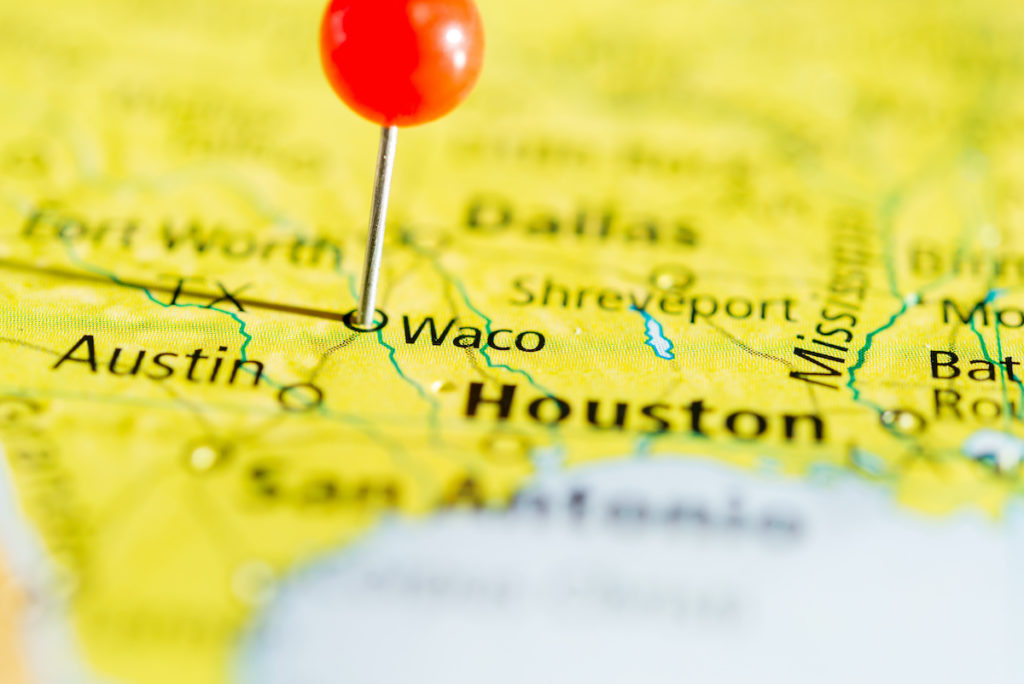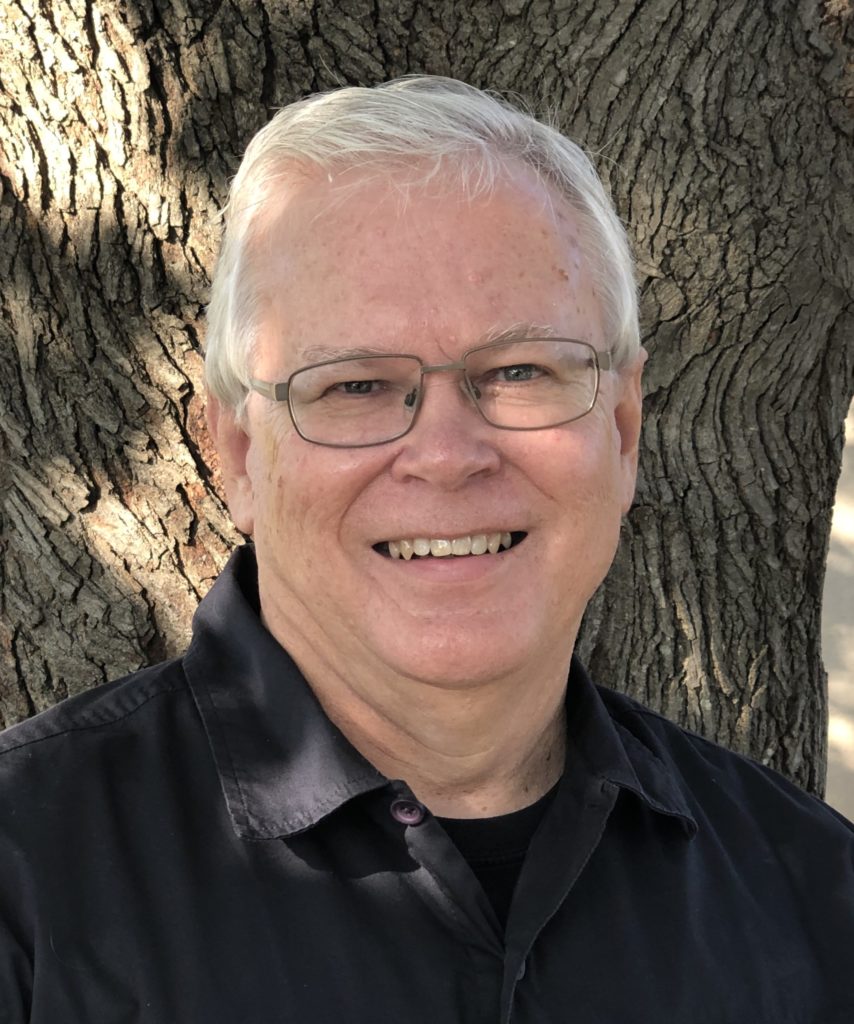By Jeremy Rhodes
The first wave of data releases from the 2020 US Census is here, and many of the demographic shifts that we’ve seen across the country and the state are mirrored in our Waco community. In this series of four posts, I will present some of the demographic changes we see in McLennan County from 2010 to 2020. This first post will be an overview of the changes in the data reported by the U.S. Census Bureau.
In all, McLennan County saw an increase of 10.9% from 2010 to 2020. The county added an additional 25,673 residents, with a 2020 population of 260,579. Of the McLennan County residents, 53.1%, or 138,486 people, live in the city of Waco. This rate of growth is lower than the Texas growth rate of 15.9%, but higher than the total U.S growth rate of 7.4%.

The map shows where we saw growth and decline in McLennan County from 2010-2020. The coloring shows the change in total population. Green areas showed increases in total population, while red areas showed decreases. The numbers represent the total 2020 population for that area. The geographic boundaries are census tracts according to the established 2019 boundaries.
The highest growth rates appear along the outskirts of the Waco city limits, in communities such as China Spring, Speegleville, Woodway, Hewitt, Robinson, and Bellmead. Areas that saw population decline over this time include East Waco, downtown Waco, and the 10 to 15 blocks on either side of the 25th/26th St. corridor, running from I-35 in the southeast to Park Lake Dr. in North Waco. Those areas are also characterized by lower populations than the rest of the city.
In the next posts, we will begin exploring the changing racial and ethnic dynamics of McLennan County. If you have any questions about this, or if you would like Jeremy to give an overview of these changes to your group, staff, or organization through Zoom or in person, please contact Jeremy Rhodes at [email protected].

Jeremy Rhodes, Ph.D., is director of research and community impact for Prosper Waco.
The Act Locally Waco blog publishes posts with a connection to these aspirations for Waco. If you are interested in writing for the Act Locally Waco Blog, please email Ferrell Foster at [email protected].
By Suzii Paynter March
There is no avoiding a crisis; chaos can come in all sizes. Everyday good people are faced with unimaginable bad luck, disasters, break downs, unexplainable confusion, desperation and violence. But none of these should be the last word on anyone’s life.
The worst thing that happens to you should not define you. But all too often, a crisis and the chaos it brings, changes everything and every relationship in sight. What if every crisis ended up on your doorstep?

Waco needs a crisis hub. A crisis hub is a place that is a combined resource center that can help streamline decisions, bolster support, provide a smooth hand off, and share the load to help people in crisis avoid the chaos that can destroy themselves and their families.
Right now, mental health professionals, medical personnel, City of Waco, and McLennan County leaders are working toward building the right team to respond to overwhelming crises and build a place for Waco to have a crisis hub. Responding to the kinds of personal crises that can bring harm to self and others and finding the way out of chaos takes a team.
Through the leadership of the Prosper Waco working group, the Behavioral Health Leadership Team, the Board of MHMR, and the advice of other communities who have also tackled this problem, Waco is retooling to minimize the chaos that wreaks havoc on friends, family, and neighbors. Bringing existing resources together matters, and it multiplies the effectiveness of intervention.
The number of people in crisis and the intensity of the crises grow month by month. One frustrated man in crisis described Waco as a pinball machine – “I know I need help, but all I can do is bounce around town or be drunk or violent. Can’t somebody catch me on the bounce. I know I need help?”
Teams in a crisis hub can function together to avoid duplication of efforts; they can minimize missed opportunities and promote persistence; they can support each other in the very hard work of helping people climb out of chaos and find hope. A crisis hub team can find steps toward solutions JUST because they are together and can bring many talents to bear all at once. Concentrating services helps the person in crisis and it helps sustain the strength of the professionals working together, too.
When is the sum greater than its parts? When a small group of caring, talented people step in together to tackle chaos and come out the other side with hope. I would not know what to do if the crisis were on my doorstep, but I can be part of the solution by supporting the team that is building the Waco Crisis Hub.

Suzii Paynter March is chief executive officer of Prosper Waco.
The Act Locally Waco blog publishes posts with a connection to these aspirations for Waco. If you are interested in writing for the Act Locally Waco Blog, please email Ferrell Foster at [email protected].
By Ferrell Foster
People mean different things when they say “Waco.” Some mean the Waco of a few years ago (much smaller geographically); others think primarily of downtown and Baylor (where the action is), others mean the current city limits (reaching further and further out).
When I think of Waco, I think of what I call Big Waco and some call Greater Waco. I think of the city, plus Woodway, Hewitt, China Spring, Lacy Lakeview, Bellmead, Robinson, even all of McLennan County. Big Waco is big.

The national City Health Dashboard identifies 10 city types and includes 57 small to midsize Texas cities in their data. Waco is considered a “regional hub.” There are only three regional hubs in Texas — Beaumont, Port Arthur, and Waco. Nearby Temple is identified as a “working town.” College Station, Denton, and San Marcos are called “college cities.”
The regional hub designation, I think, captures the essence of Waco. We are different from a working town or a college city. We are more — for better or worse.
The better part of being a regional hub is that people from surrounding communities come here to do business and to be entertained. Central Waco is like a magnet drawing people and resources to its core and helping all regional residents enjoy a better-resourced, more-connected life.
But there is a downside for regional hubs. The City Health Dashboard says this of the group: Regional hubs are “midsize ‘micropolitan’ cities that serve as hubs within smaller metro areas, with high inequality and large Black populations, where most residents work locally, and populations are decreasing.” Here are some characteristics of regional hubs:
— Great income inequality; “Black households earned 46% less than their White counterparts and this wage gap has been increasing.” (In Waco, Blacks earn about 40% less than Whites. In McLennan County, 47% less.)
— An average of 25% of residents live below the federal poverty line. (In Waco, 26.2% are below the poverty line. In the county, 19%.)
— Average life expectancy of 76 years at birth. (In Waco, 77 years.)
— Average rent burden of 54%, with an increase of 11.8% between 2000 and 2017
across cities.
(My thanks to the Prosper Waco research team for the local numbers.)
The future of Waco is captured in this simple picture. As a regional hub, we have a real opportunity for economic growth and lifestyle satisfaction. But, we should not be content with only a part of Waco and its region doing well. We need to care about racial, financial, and health inequities.
If we can address the downside challenges while we pursue the upside opportunities, we will be more than a regional hub; we will be a very good place to live, work, and do business.
I have two basic points here:
First, some people have a narrow view of Waco (the central city). I think it’s good for us to see this community more broadly, including acceptance of the surrounding towns and school districts as part of one whole. Each city/town, neighborhood, and school district is distinct, but we are connected — Big Waco.
Second, those who do not live in the parts of Big Waco that face serious economic and health challenges are still connected to those neighborhoods. In order for Big Waco to prosper, all of us are needed, especially in addressing our most challenging issues.
My faith tells me it is critical to love my neighbor. And love in that context does not mean an emotion; it is a commitment to serve. And neighbor is not just the person next door; it is anyone in need that I can help. Waco needs to be a place of good neighbors in the best and highest since of the phrase.

Ferrell Foster is acting executive director of Act Locally Waco and senior content specialist for care and communication with Prosper Waco.
The Act Locally Waco blog publishes posts with a connection to these aspirations for Waco. If you are interested in writing for the Act Locally Waco Blog, please email Ferrell Foster at [email protected].
By Kelly Craine
The Texas Healthy Communities program recognizes Waco-McLennan County Public Health District for conducting a community assessment designed to evaluate current policy, systems, and environmental strategies and public health practices proven to reduce risk factors for cardiovascular disease, stroke, and other chronic diseases.

The THC program assists communities to assess their existing environments, implement changes in local environmental and policy infrastructure, and adopt priority public health practices to reduce risk factors for cardiovascular disease, stroke, and other chronic diseases. Based on outcomes of the community assessments, The THC program recognizes best practices being advanced within a community’s local jurisdiction.
The following communities were recognized at the Gold, Silver, Bronze, or Honorable Mention levels in fiscal year 2021:
• Gold Level: N/A
• Silver Level: Harris County, McLennan County, Travis County
• Bronze Level: El Paso County, City of Houston, Victoria County, Wichita County
• Honorable Mention Level: Brazos County, Lamar County, Taylor County
Communities are assessed on eight indicators to determine recognition as a Texas Healthy Community. Environmental indicators include designated areas for physical activity, healthy eating options, mother-friendly worksites, and evidence-based community supports for healthy aging. Policy indicators include smoke free ordinances, EMS systems with appropriate acute stroke treatment protocols, and an emergency response action plan.
More information about the THC program can be found on the Texas Department of State Health Services website or by contacting THC Program Coordinator Nneka Shoulds by email at [email protected].

Kelly Craine is communications lead for the Waco-McLennan County Public Health District.
The Act Locally Waco blog publishes posts with a connection to these aspirations for Waco. If you are interested in writing for the Act Locally Waco Blog, please email Ferrell Foster at [email protected].
